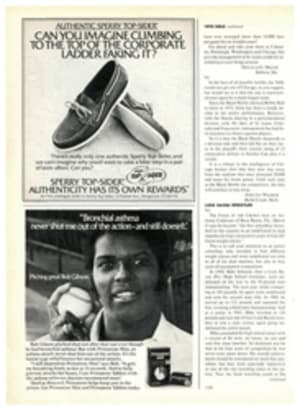
A BREATH OF FRESH AIR AFTER A HEAVY HAYES
Scarred, Ohio State begins again. Done in by his own ugly temper, Woody Hayes is in exile. Earle Bruce now occupies the office in the St. John Arena that Hayes held like a fortress for 28 years, inviolable and forbidding. By contrast, Bruce opens the door willingly to the stream of people and problems that go with managing one of the nation's most successful ($5.5 million annual revenue) football factories. Access is something new at Ohio State. One day last week, as he prepared for the opening of spring practice, Bruce ushered in a visiting writer from New York just as one from Los Angeles exited, their paths momentarily clogging his threshold. Bruce said it had been that way every day he had been in town. America, presumably, will now discover Columbus.
The office itself is surprisingly small and plain, undecorated save for two wide-angle pictures of those Ohio State crowds of 83,112 attracted by Hayes' remarkable record (205-61-10). There has been no time to redecorate, says Bruce. He has been working without time off, "except for one day when I had the flu." He has been recruiting—21 signees from Ohio alone, a number of them highly coveted—and making speeches in such hotbeds of Buckeye loyalty as Marietta, Massillon and Zanesville. Bruce was a high school coach at Massillon, twice going undefeated there.
On this day the furnace was malfunctioning, and the office was stifling. Bruce obligingly opened a section of the window. He said he hadn't noticed how hot it was. As for how hot it might get, he said the Ohio State job was one "any coach in his right mind would want," and he did not think that following Hayes was "a negative thing." Comparisons, he said, were inevitable, but "they don't worry me."
The two men are not strangers. Although he was a member of the Buckeye football team (1949-51), Bruce never played for Hayes, because of injuries. He did coach as an assistant under Woody (1966-71) before going off to make his reputation in other places, most recently at Iowa State. Bruce is his predecessor's antithesis. If Woody Hayes was accurately characterized as a grizzly bear, Earle Bruce is a teddy—roundish and frayed looking, as if handled fondly but a lot. The despair of tailors, he is a dumpy 5'9", his shirttail perpetually protruding from his pants. But his eyes dance with fire, and friends say he can tell a joke even under pressure, also a new sensation.
Some of that fire Bruce obliquely credits to Hayes. Eleven years ago he was going to quit coaching because of Hayes, "go into the fast-food business, open a pizza parlor, anything." He says Woody was on him all the time that spring, more than on any of the other assistants. "It was my year to be picked on, I guess, and I hated it." He remembers the experience without rancor—smiling, in fact, in the retelling of it—and presents it neither as a tribute to Hayes nor a condemnation. Somehow, it serves as both, and is perhaps more revealing than Bruce intends.
It is now three months since the "Punch Bowl" in Jacksonville. The facts are well known. In a final paroxysm of frustration over a season of intercepted passes, Hayes hit a Clemson player who had just picked off a last-ditch Art Schlichter pass, assuring Ohio State's Gator Bowl defeat. Burying Caesar was a traumatic undertaking. And the undertaker, Ohio State Athletic Director Hugh Hindman, admits to receiving telephone calls and hate mail. Hayes, at the time, "threatened me," Hindman says, but did not follow through. They no longer speak.
Like Dempsey after Tunney, in disgrace and defeat Hayes has become more beloved than ever by his steadfast backers. Testimonials have been held in his honor; 450 former players and 50 coaches attended one in Columbus, and even his archrival, Bo Schembechler of Michigan, got up to do him honor at a banquet in Dayton. There is a move afoot to have the Ohio State stadium renamed in Hayes' honor.
Consistent with this and the many ironies of a grimly ironic case, Hayes' Elba is no more than a stone's throw away from his old office—in fact, two doors away in the ROTC building. Supplied by the university as a concession to his years of service, it is roomy, handsome and thickly carpeted. In its outer office is a secretary named Betty Garrett, who is also a free-lance writer. Hayes needs her to help "polish" the 600 pages he has written for a book relating football to history, and to help him conduct the business of being an exile in demand. His schedule is heavy with speaking engagements and he is to have a film made of his life.
On the same day that Bruce was entertaining visitors with his shirttail out, Hayes was looking tanned, fit and natty in a sport coat and tie coordinated in browns. Two visitors had been allowed through the buffer zone by Betty Garrett, and Hayes welcomed them warmly. He refused, however, to discuss the "transition." He said he was saving the story for his old and loyal friend Paul Hornung of The Columbus Dispatch.
It wasn't until Jan. 19, three weeks after the Gator Bowl, that Hayes came out of hiding to address a capacity crowd at the Columbus Chamber of Commerce. He then admitted, "I got what was coming to me," and he apologized. He encouraged his audience to support Bruce, "a great coach."
But in his new office last week, Hayes apparently had experienced a new birth of resentment over his pink slip. He chose a letter from a stack he estimated to be 3,000 or more, supportive and commiserating letters he still had to answer. The correspondent said she was so infuriated by his dismissal that she had taken her daughter, who would have been a senior, out of Ohio State. Hayes read the letter aloud, then shook his head sadly. His voice hardened.
He said he had cleaned out his desk in his old office in two days, and had not been back, and did not intend to go around again or to be a part of Ohio State football. He said that "after 28 years, they're trying to tear it all down," to discredit his accomplishments. "They don't want anything to do with me now, and that's fine with me. The hell with 'em." He brought the side of his hand down hard on the desk, making a thudding noise—a facsimile cleaver separating 28 years past from an indefinite future.
Hayes said that at 66 he is without many close friends. He said he does not do the things that spawn intimacies—"I don't fish or hunt or play golf. I don't play cards. I read. I write." You do not need friends to do those things, of course.
Esco Sarkkinen, who retired as Ohio State's defensive end coach a year ago, after having been with Hayes all the way, says that Hayes "always hated the expression 'Woody's mellowing.' Even after his heart attack in 1974, when I went around to see him, he seemed embarrassed, like it was a weakness.
"When I retired, Coach Hayes asked me if I thought he should quit, too. I said, 'Not as long as you can be creative.' I was trying to say more than that. In the last 10 years he had become more a philosopher and a historian than a coach. The Xs and Os were not as interesting to him.
"We all had differences with him, of course. We used to measure his blowups in megatons. 'That's a five-megaton blowup.' For a new assistant, it could be eye-popping. But he never held a grudge, and everybody knows how he was so unselfish with the things he did—going to hospitals, spending hours there. Refusing fees for appearances, like with the Boy Scouts. He used to pass up raises for himself so his assistants could get them. It is like Tom Pastorius [of the Columbus Citizen-Journal] says, 'If you want to dislike Woody, don't sit down to the table with him.' "
Sarkkinen believes the future is secure at Ohio State with Bruce, because "it's one of the five or six places where as long as you recruit with intensity you can almost be assured of winning seven or eight games a year. Ohio State simply gets better players." The recent expanding frustration for Hayes, he says, was that Woody no longer won the two or three "big games" that went with the others. He had lost to Michigan three times in a row; he had lost seven straight on national television.
The final irony, says Sarkkinen, was that Hayes had allowed himself to go with a passing attack that he never believed in, and with a freshman quarterback (Schlichter) "who is going to win a lot of games here, but at that point could hardly have been expected to know the names of his teammates, much less take command."
Sarkkinen is not surprised by what happened in Jacksonville.
"Woody would have done the same thing his first year as he did the 28th. The potential was always there. It was just a matter of terrible timing. Woody always said there were three things that could happen when you pass, and two of them are bad. Now there are four things that can happen, and three of them are bad."
Perhaps not for Earle Bruce.
TWO PHOTOS
After 28 years at Ohio State, Woody Hayes is now starring on the banquet circuit while his successor, Earle Bruce, and Quarterback Art Schlichter plan how they can carry on his winning ways.

